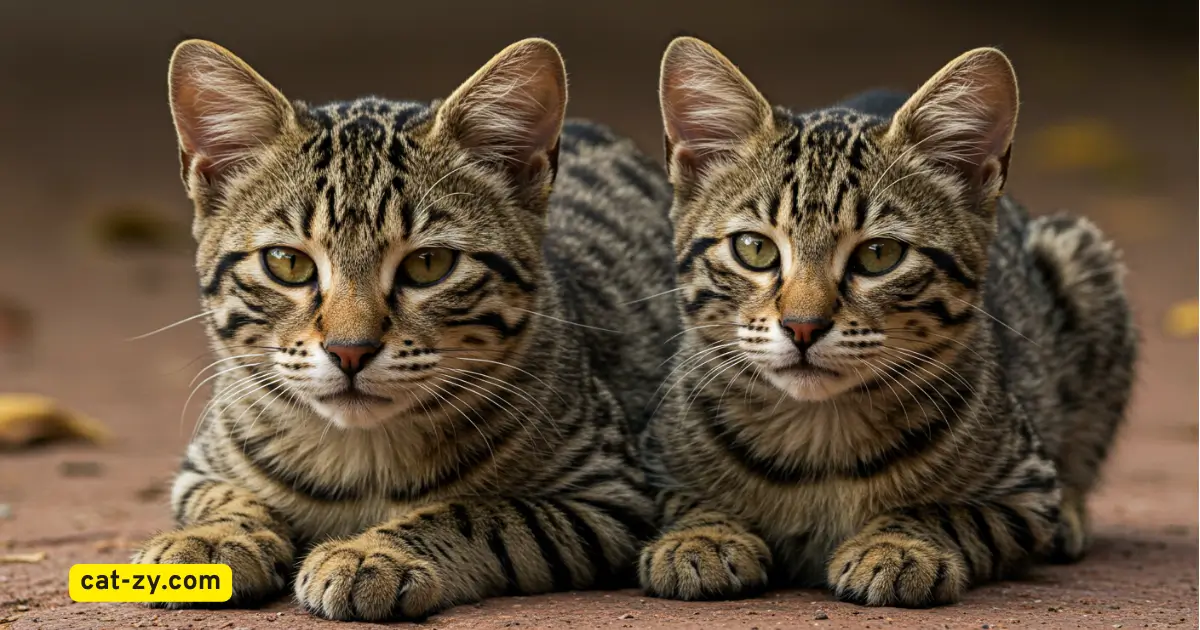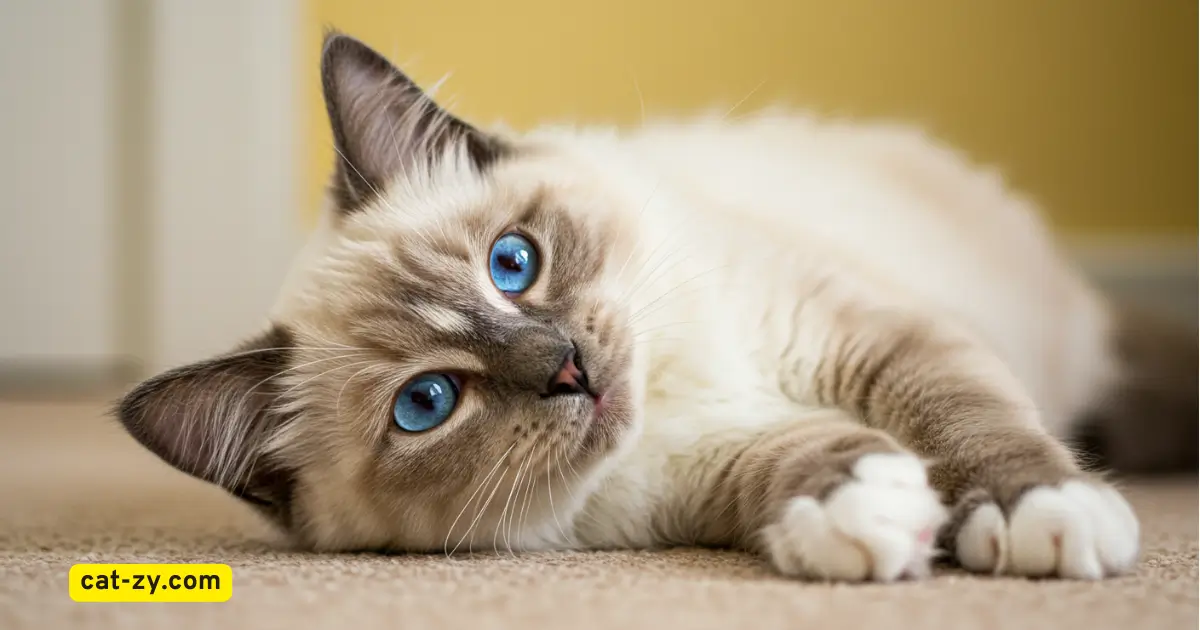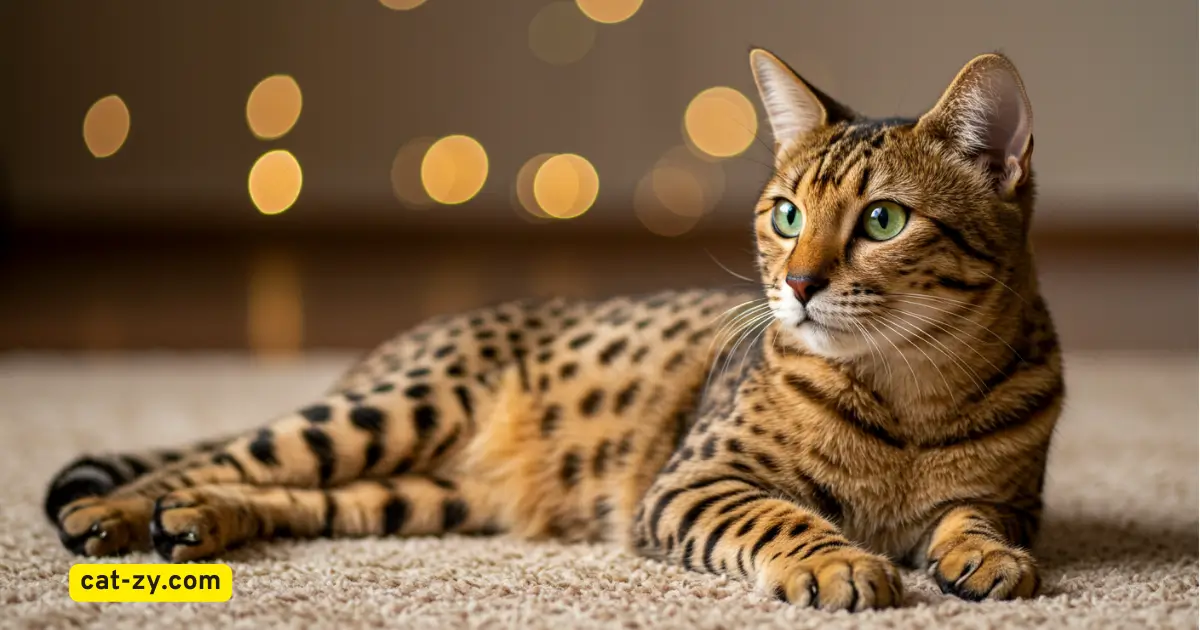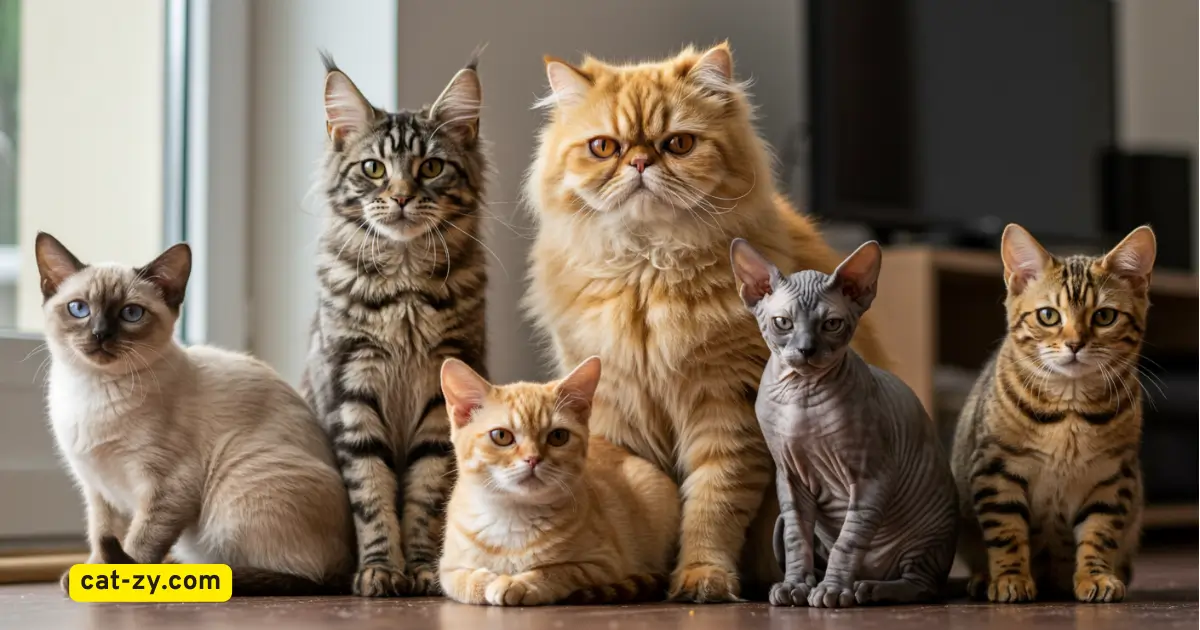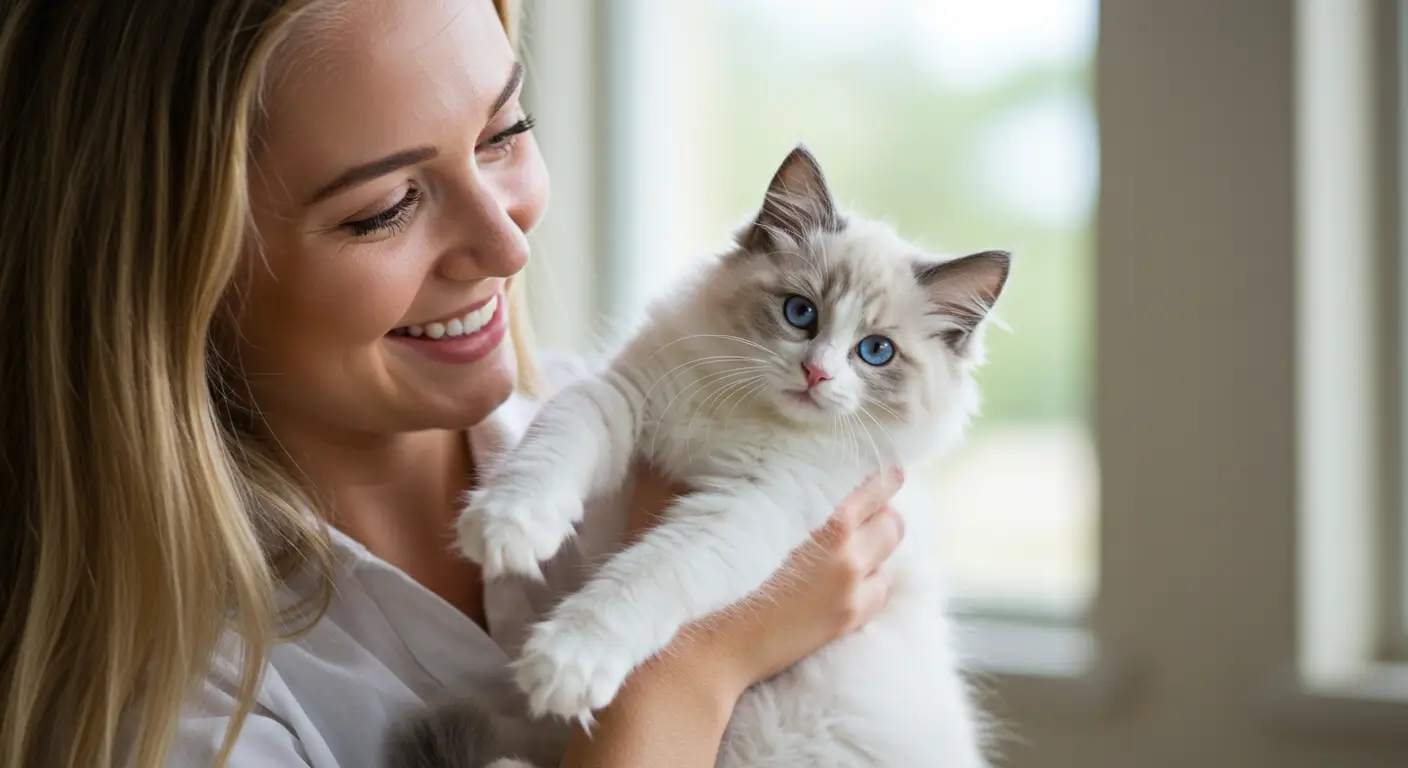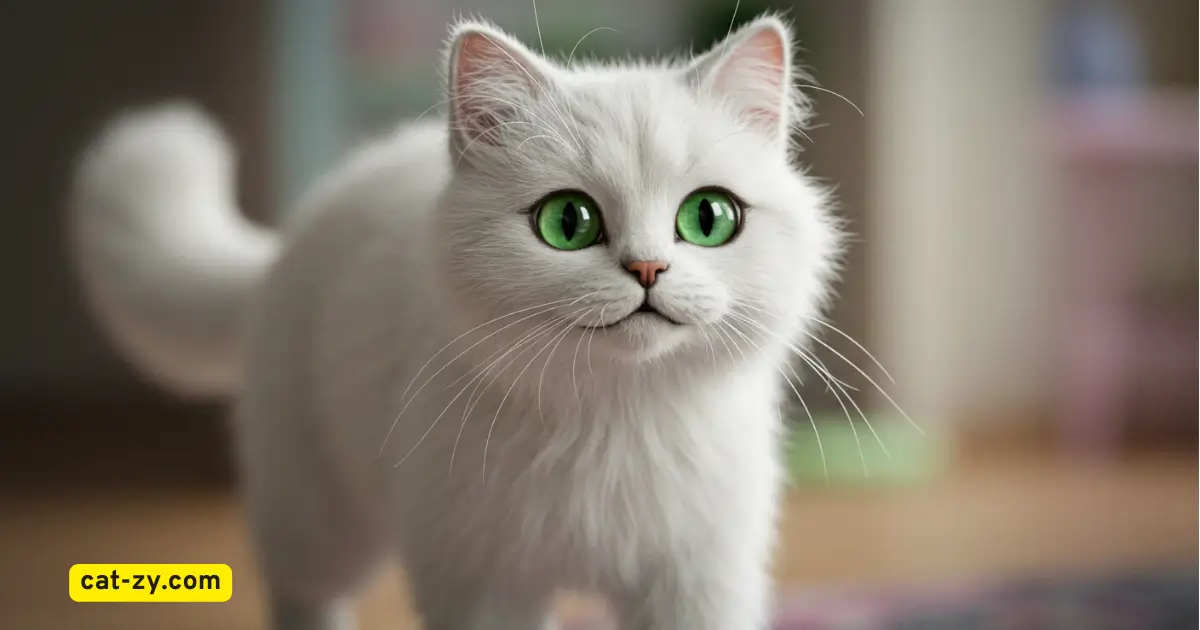Spotted Cats: Explore the 4 Most Beautiful Spotted Breeds
Have you ever looked at a wild leopard and wished it could be your pet? Spotted cats mix the beauty of nature with the comfort of home. They have unique spots that tell a story of beauty and evolution.
These cats are not just pretty; they have a special place in our hearts. Whether you want a spotted cat as a pet or just love their looks, this guide is for you. It will show you why these cats are special and what makes their spots unique.
Table of Contents
Introduction to the World of Spotted Cats
Spotted cats have always amazed us with their unique patterns. These patterns are not just for looks; they help them survive. From the jungle to our homes, their spots tell a tale of adaptation and beauty.
Why Spotted Patterns Evolved in Cats
Spots help wild cats like leopards and ocelots blend into their surroundings. Their coats look like dappled sunlight or leaves. This camouflage helps them sneak up on prey or hide from danger.
This skill has been passed down through generations. It’s a key part of their survival.
The Allure of Spotted Coat Patterns
People love these patterns, leading many to adopt spotted breeds like Bengals or Egyptian Maus. Their wild looks connect us to nature. This makes us want to share our homes with them.
But spots are more than just looks. They also show health and energy in many animals.
Wild vs. Domestic Spotted Cats
Wild spotted cats, like snow leopards, live freely in their natural habitats. Domestic breeds, however, are bred for their looks and friendly nature. Even hybrids like Savannah cats, part serval and part domestic, are social and fit well into home life.
Their spots remind us of their wild origins. But they don’t dictate their behavior.
The Science Behind Spotted Coat Patterns
Discover the science behind the mesmerizing patterns on spotted cats. These patterns come from complex genetic interactions. They are shaped by evolution and biology. Let’s explore how nature and science create these eye-catching designs.
Genetics of Spotting in Felines
Every spotted cat’s coat is a genetic puzzle. The agouti gene and Taqpep gene control pigment distribution. These genes decide if a cat’s fur shows spots, stripes, or solid colors.
For example, the Taqpep gene creates rosettes—overlapping spots—seen in breeds like Bengals. Over generations, breeders have emphasized these traits. This makes domestic cats’ patterns resemble their wild relatives.
How Spots Differ from Other Coat Patterns
Spots and stripes come from different genetic pathways. Tabby stripes form through uniform pigment gradients. But spots require irregular pigment clustering.
Cats with spots and stripes carry unique genetic markers. A Bengal’s rosettes, for instance, involve multiple genes working together. This complexity explains why no two spotted coats are identical, even in the same litter.
Evolutionary Advantages of Spotted Coats
Nature designed these patterns to help wild cats survive. Spots break up a cat’s outline, aiding stealth in forests or grasslands. Domestic spotted cats retain this camouflage instinct.
Rosettes and stripes in cats with spots and stripes also improve survival. They blend into environments, a trait passed down through millennia of evolution.
Popular Domestic Spotted Cat Breeds
Choosing spotted cats breeds reveals a variety of domestic felines. They have striking patterns and friendly personalities. The Bengal, Savannah, and Egyptian Mau are among the most popular. Each has unique traits shaped by their genetic background and history.
Bengal cats have wild-looking rosettes, thanks to their Asian leopard cat heritage. Their bold patterns make them perfect for those who want a jungle-inspired pet. Savannah cats, with their serval heritage, are elegant and high-energy, but legal restrictions apply in some U.S. states. The Egyptian Mau, one of the oldest spotted cat breeds, has random spots and a sleek build, thriving in active homes.
The Ocicat is a domestic breed with jungle-like spots but no wild DNA. These playful cats are great for family life. Spotted Abyssinian variants offer quieter companionship. Each breed has its own care needs, with some needing more space or stimulation.
Availability of these breeds varies by region, but you can find them through reputable breeders or rescues. Research the breed-specific traits to find the right fit for your lifestyle. These breeds show that domestic spotted cats can have wild aesthetics and still be great household pets.
Bengal Cats: The Miniature Leopards
Bengal cats are very popular in the U.S. They mix wild beauty with home charm. Their history started in the 1960s with a mix of domestic cats and Asian leopard cats. Even though they’re far from their wild roots, their spots still show their wild side.
Bengal Cat Origins and History
People wanted to create a cat that was both beautiful and friendly. Over time, they bred them to be perfect pets. Today, Bengals have only a small amount of wild cat DNA, making them great pets.
Distinctive Bengal Spot Patterns
Every Bengal cat has its own unique coat. They have bold spots, swirls, or solid colors. The “glitter” gene makes their fur sparkle, adding to their beauty. Their spots remind us of leopards, making them special among spotted cat breeds.
Bengal Personality Traits
Bengals are full of energy and love to learn. They enjoy playing with water and toys. Their smart nature means they need things to do, like puzzles or training.
They make sounds like chirps and purrs. This shows they’re playful and love to be around people.
Caring for Your Bengal Cat
They need a diet rich in protein and lots of exercise. Bengal owners should give them scratching posts and places to climb. Regular vet visits are important for their heart and hips.
They have short fur, so grooming is easy. But, they need lots of mental stimulation to stay happy.
Savannah Cats: Wild Beauty in Your Home
Savannah cats mix the wild beauty of spotted cat breeds with home charm. They are bred from domestic cats and the African serval. This mix gives them a wild look, with spots that remind you of their ancestors.
These cats are tall and have long legs, with some males reaching 25 pounds. They look like mini cheetahs. Their big eyes and ears make them stand out. They also bond well with owners, learning commands like dogs. Plus, they love playing in water, which is rare for cats.
But owning a Savannah cat is serious. Laws about them vary by state, especially for the first three generations. They need lots of stimulation, like climbing and toys, and daily walks. Their diet should be high in protein to keep up with their energy. If you want a cat that’s social and adventurous, the Savannah is perfect. But, you must be ready for their lively nature.
Egyptian Mau: The Original Spotted House Cat
The Egyptian Mau is a standout among spotted house cats. Its history goes back over 3,000 years to ancient Egypt. There, its ancestors were celebrated in art and seen as symbols of grace.
This breed’s unique spotted cats pattern is natural. It’s not from crossbreeding with wild animals. Instead, it comes from their pure domestic lineage.
Egyptian Mau’s Ancient Heritage
These cats were friends to pharaohs, as shown in ancient tomb paintings. Their spots are not just for looks. They’re a genetic trait, untouched by crossbreeding.
Each Mau has a special “mascara” line from their eyes down. They also have a “scarab” marking on their forehead. These are symbols of their ancient roots.
Unique Characteristics of the Egyptian Mau
This breed has a wild look but is domestic. Their spots look like small roses. They can run up to 30 mph, making them the fastest spotted cats at home.
They have soft voices but are very curious. They chirp when they’re excited or playing.
Living with an Egyptian Mau
These cats need an active home. They bond closely with one or two people but watch everyone. They need mental challenges, like puzzle toys and climbing spots.
They adapt well to indoor life but keep their independence. Their gentle nature makes them perfect for those who want a cat with history but not the hassle of exotic breeds.
Ocicat: Spots Without Wild Blood
If you want a spotted cat breed without wild ancestry, the Ocicat is a great choice. It was created by accident in 1964 by Virginia Daly. She mixed Siamese and Abyssinian cats to get a Siamese with Abyssinian coloring. This led to a golden kitten named Tonga, who had spots like an ocelot.
Later, American Shorthairs were added to make the Ocicat sleek and muscular. They also gave it a unique coat.
The Fascinating Development of the Ocicat
Ocicats now have big, well-spaced spots that look like ocelots. Their coat is smooth and shiny. Unlike hybrids, they don’t have wild DNA. They have the domestic genes of their ancestors.
Their spots come in colors like tawny, chocolate, and blue. But all have the signature spotted tabby pattern. This shows that domestic cats can look wild through careful breeding.
Ocicat Temperament and Care
Ocicats are smart, playful, and calm, thanks to their mixed heritage. They love to talk and are great for active families. They need little grooming, just weekly brushing to keep their coat shiny.
They are healthy because they are purely domestic. Playing with them and keeping them social makes them happy. This means their wild look comes with the ease of a domestic pet.
Wild Spotted Cat Species That Inspired Domestic Breeds
Domestic spotted cats owe their beauty to wild ancestors. Spotted cats wild like leopards and ocelots have always fascinated breeders. They wanted to bring their striking patterns into domesticated forms. Let’s look at three species that influenced the feline world.
Leopards and Their Iconic Rosettes
Leopards have spots that are like nature’s art. These spots help them blend in with forests and grasslands. Bengal cats were bred to look like leopards, but they don’t have the same spots.
Studies show domestic cats can’t fully copy wild spots. Each leopard’s coat is unique, helping them survive.
Ocelots: Medium-Sized Spotted Beauties
Ocelots have gold-and-black spots that look like a chain link. They inspired the Ocicat breed. But Ocicats don’t have any ocelot DNA.
Ocelots live in rainforests and use their spots to hide. Their domestic look-alikes can only try to mimic this through breeding.
The Endangered Rusty-Spotted Cat
The rusty-spotted cat is one of the smallest wild cats, weighing under four pounds. People often wonder, are rusty-spotted cats dangerous? In the wild, they hunt birds and insects but are not a threat to humans.
Unfortunately, they are critically endangered. Selling a rusty spotted cat for sale is illegal worldwide because they are protected by CITES. We should admire their beauty from afar and support ethical breeding and wildlife preservation.
Caring for Cats with Spots and Stripes
Owners of cats with spots and stripes know they need extra care. Their colorful coats, common in many spotted house cats, need regular grooming. Use a soft brush weekly to remove loose fur and keep patterns vivid. Some breeds, like Bengals, might enjoy occasional baths—always use pet-specific shampoo.
These cats often have high energy. Provide climbing trees, puzzle toys, and daily playtime to match their wild ancestors’ instincts. Cognitive engagement helps avoid boredom, which can otherwise result in harmful behaviors. Rotate toys and set aside 15-20 minutes daily for interactive play.
Nutrition matters too. Many spotted breeds thrive on diets rich in animal protein. Consult your vet about kibble or raw options suited to their unique needs. Avoid overfeeding—use measured portions to prevent weight gain common in inactive cats.
Health checks are vital. Schedule yearly vet visits to monitor for breed-specific issues. For example, some spotted breeds may face heart conditions or hereditary eye problems. Early detection improves outcomes.
Socialization starts young. Kittens need early exposure to people and sounds to build confidence. Positive reinforcement training helps them adapt to home life. These steps ensure spotted house cats grow into calm, well-adjusted companions.
Are Spotted Cats Different from Other Cats?
Spotted cats are known for their unique coats and behaviors. They share basic instincts with other cats. But, breeds like Bengals and Savannahs have traits from wild spotted cat breeds.
These cats often need more active play. This is because of their wild heritage.
Behavioral Traits Common in Spotted Breeds
Spotted breeds like Bengals and Egyptian Maus are very energetic and curious. They have a strong prey drive, chasing toys with great intensity. Some may also talk more than other cat breeds, looking for attention.
Their wild roots make these traits a big part of who they are. Owners need to give them exciting places to play and interact.
Caring for Hybrid Spotted Cats
Hybrid breeds, like Savannahs, need extra care. In some places, there are laws about owning them because they’re close to wild animals. It’s important for owners to check local laws and make sure their homes are safe.
These cats do well with mental challenges. Things like puzzle toys or training exercises keep them happy and engaged.
Meeting Exercise Needs
Spotted cats need to move every day. Bengals love to run, and Ocicats enjoy climbing. They need tall scratching posts or cat trees for places to climb.
Playtime with interactive toys or wheeled toys helps them burn energy. Without enough activity, they might get bored and act out.
Finding Your Perfect Spotted Companion
Getting a spotted cat is a big decision. Think about if your life and home fit the needs of these cats. They need more activity than usual. Look into cat breeds like Bengals or Savannahs to see if they match your lifestyle.
Questions to Ask Before Adopting a Spotted Cat
Think about their energy levels. Spotted cats need to play every day. Ask breeders about health checks and how friendly the cats are. Can your home handle a cat that jumps high or is very active? Stay away from sellers of “rusty spotted cat for sale” as these are illegal. Always choose ethical sources.
Reputable Breeders vs. Rescue Organizations
Good breeders care about health, not making money. They should show you genetic tests and socialization proof. Rescue groups have spotted cats looking for homes. They charge much less than exotic breeds. Look into places like Big Cat Rescue or local shelters for spotted cat breeds.
Cost Considerations for Exotic Spotted Breeds
Prices vary a lot. Bengals cost $1,500–$3,000, and F1 Savannahs can be over $20,000. Never pay under $800 for a kitten. Low prices might mean the seller is not ethical. Remember, “rusty spotted cat for sale” ads are scams or illegal. Look for legal cat breeds instead.
Conclusion: The Timeless Appeal of Spotted Cats
Spotted cats have always fascinated pet lovers with their wild looks and lively personalities. Whether you love the Bengal’s leopard-like appearance or the Egyptian Mau’s elegance, these cats are special. Their spots are not just pretty; they show how their wild ancestors survived, thanks to careful breeding.
Choosing a spotted cat breed means knowing what they need. Some, like the Savannah, need lots of space and activity. Others, like Ocicats, love being around people. Finding the right breed for you means doing your research. You can find affordable options like Ocicats or spend more on hybrids like Savannahs.
These cats show us that beauty comes with a big responsibility. They need special diets and activities to stay healthy. Their popularity also shows us the need for ethical breeding to protect wild cats. Owning a spotted cat means loving their charm and being ready to care for them.
Spotted cat breeds offer a wide range of companionship, from playful to calm. Think about your home and if you’re ready for a spotted cat. With so many breeds, you can find the perfect spotted friend for your family.
FAQ
What are some popular spotted cat breeds?
Popular spotted cat breeds include the Bengal, Savannah, Egyptian Mau, and Ocicat. Each has its own look, pattern, and personality.
Are rusty-spotted cats dangerous?
No, rusty-spotted cats are not dangerous to people. They are untamed creatures and deserve to be treated with consideration. But they usually don’t pose a threat.
How do spotted cats differ from other cat breeds?
Spotted cats are different because of their unique behaviors and energy. They often have traits from their wild ancestors, like being more vocal and playful.
Can I find a rusty-spotted cat for sale?
No, rusty-spotted cats are endangered and protected. They can’t be sold as pets. Instead, look into domestic spotted breeds that look similar.
What special care do spotted house cats need?
Spotted house cats need more to keep them happy, like climbing spots and fun toys. They also might need more protein in their food.
Are there hybrid spotted cat breeds?
Yes, like the Bengal and Savannah, which are mixes of domestic and wild cats. These cats need extra attention for exercise and socializing.
What are the genetic factors behind spotting in cats?
Spotting in cats comes from specific genes that control how their fur looks. These genes can make different patterns, like spots or stripes.
How do I choose the right spotted cat for my lifestyle?
Pick a spotted cat that fits your home and lifestyle. Think about how much exercise and social time you can give them.

